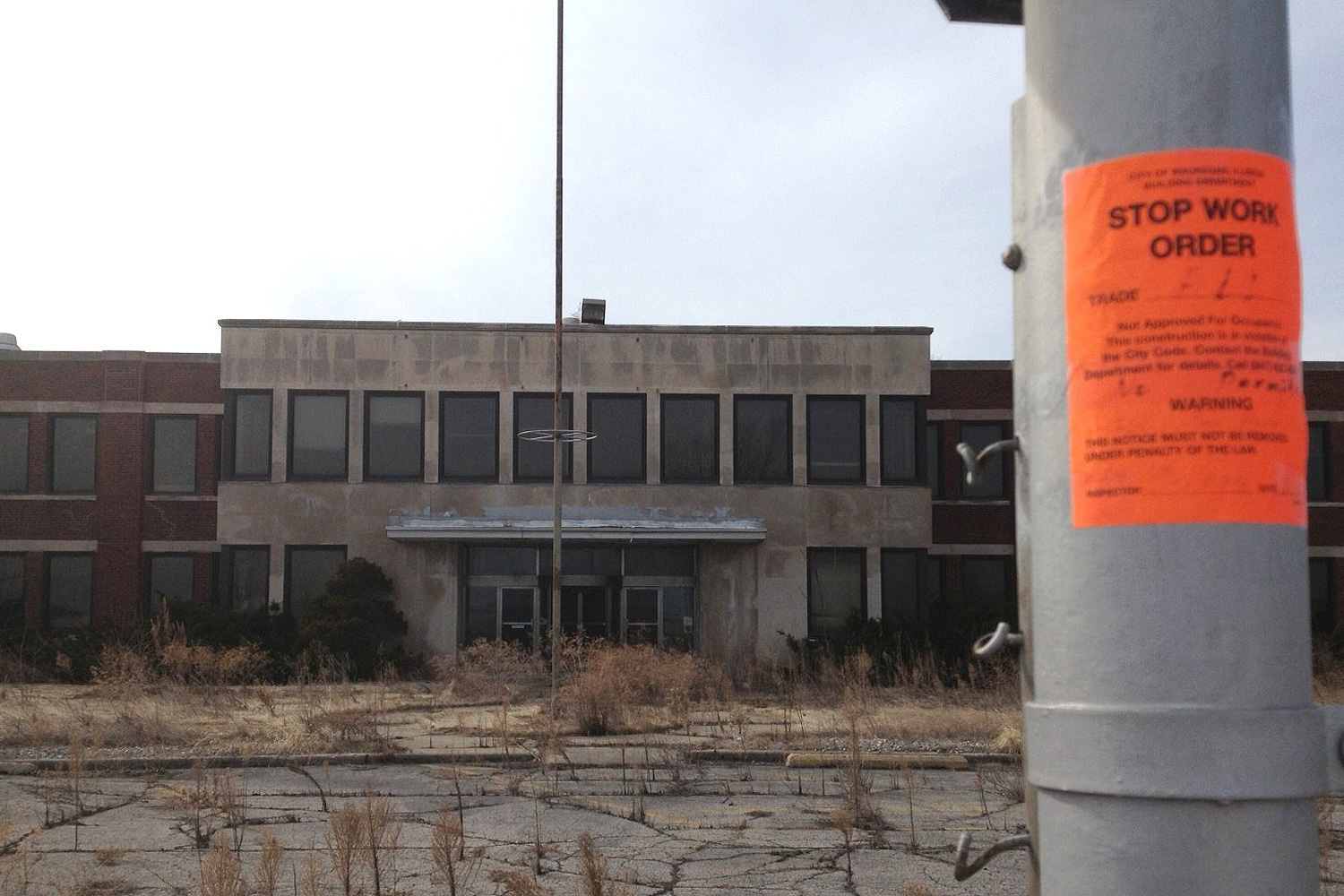On Tuesday, I posted about how Illinois is losing residents, and from where, specifically, those losses are coming. Perhaps unsurprisingly, the state was struggling most in rural areas outside of Chicagoland and downstate college towns.
After I posted this, Micah Maidenberg of Crain's pointed me towards another reason for this decline: "patterns of industry here. Job losses likely resulting in pop[ulation] loss."
He pointed me towards this post by Bill Testa, a vice president and director of regional research at the Chicago Fed. And it is indeed useful: In 2014, Testa investigated whether or not the state income tax hike—the reduction in which is causing so much difficulty in balancing the state budget and keeping up with debts—was also a factor.
He doesn't discount it, in part because investigating the effect of tax hikes on employment is exceedingly difficult, but he does tease out some structural issues in the state's employment mix that would cause problems for downstate Illinois:
In looking for alternative or contributing explanations, the state’s particular mix of industries is likely contributing to underperformance. For example, the state’s high concentration in construction and mining machinery stands out, as does its lower concentration in automotive as compared to Great Lakes states located to the east. The downstate Illinois economy is highly concentrated in manufacturing, and downstate areas have seen slower payroll employment growth than the Chicago area. And so, Illinois’s performance may yet converge with its neighbors as the automotive boom settles down, and as global economic recovery revives exports of machinery and equipment.
Fast forward to the end of 2015, the latest data that we have, and Illinois has a higher unemployment rate than its neighbors in the Seventh Federal Reserve District and the U.S. as a whole. And it's the only one of the five states with a year-over-year increase in the unemployment rate (although the Gross State Product grew 2.4 percent, faster than Indiana and Michigan, tied with Wisconsin, and behind only Iowa).
What happened? Basically, the automotive boom didn't settle down, and the global economic recovery stopped being a recovery. Testa's colleague Thomas Walstrum had an update along those lines last month, and Illinois got killed on exactly the industries that Testa thought would aid its recovery (emphasis mine):
Machinery (and the fabricated metal producers who support them) has not faired well in the past year: Illinois, Iowa, and Wisconsin all saw notable declines in machinery and fabricated metal employment (with the exception of Wisconsin’s machinery employment, which was flat). However, Iowa and Wisconsin were helped by strong growth in other flagship industries (food products in both Iowa and Wisconsin and finance in Iowa). Illinois has few other flagship industries to help it, though it’s worth noting that Chicago has fared much better than downstate Illinois because of its concentration in business services and finance. Average employment growth for Illinois’s high-[Location Quotient] industries was dismal (-2.04%), while growth was solid for Iowa’s (1.58%), and slow for Wisconsin’s (0.73%).
One of the reasons Maidenberg pointed me towards this is that he's been reporting on it; this piece in Crain's from October discusses how slowdowns in China and Brazil and a strong dollar have hurt Illinois's export-oriented industries, and how low gas prices have reduced demand for equipment in the petroleum sector. (Here's another good piece from the same time in the New York Times, which begins with the global slowdown's effect on downstate Illinois.)
But low gas prices are good for Indiana and Michigan, because it means people are buying cars, and the supply chains for Detroit run throughout those states. Indiana's also taken advantage of low gas prices to raise gasoline taxes by four cents per gallon, with almost-unanimous Republican support and unanimous Democratic opposition (though it did come with a modest income-tax reduction). And, more importantly, they indexed the gas-tax rate for inflation, so they don't have to come back and repeat the same political fights.
Meanwhile, in Illinois, the always-excellent Illinois Issues tried to figure out what could improve the prospects for manufacturing downstate. Author Bill Wheelhouse was told that uncertainty over the state's tax rate and the state's comparatively high workers-compensation costs were two obvious targets.
That was in January—of 2015. One year later, we're still fighting over those two subjects.



